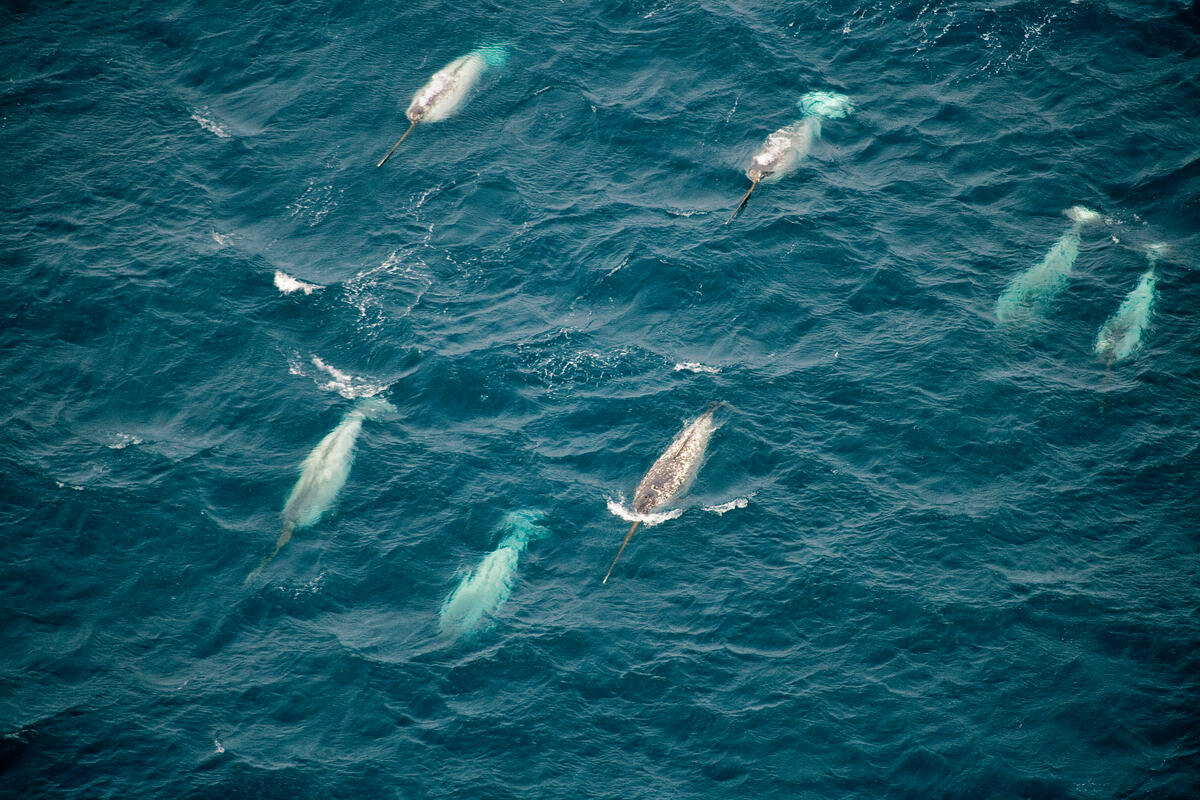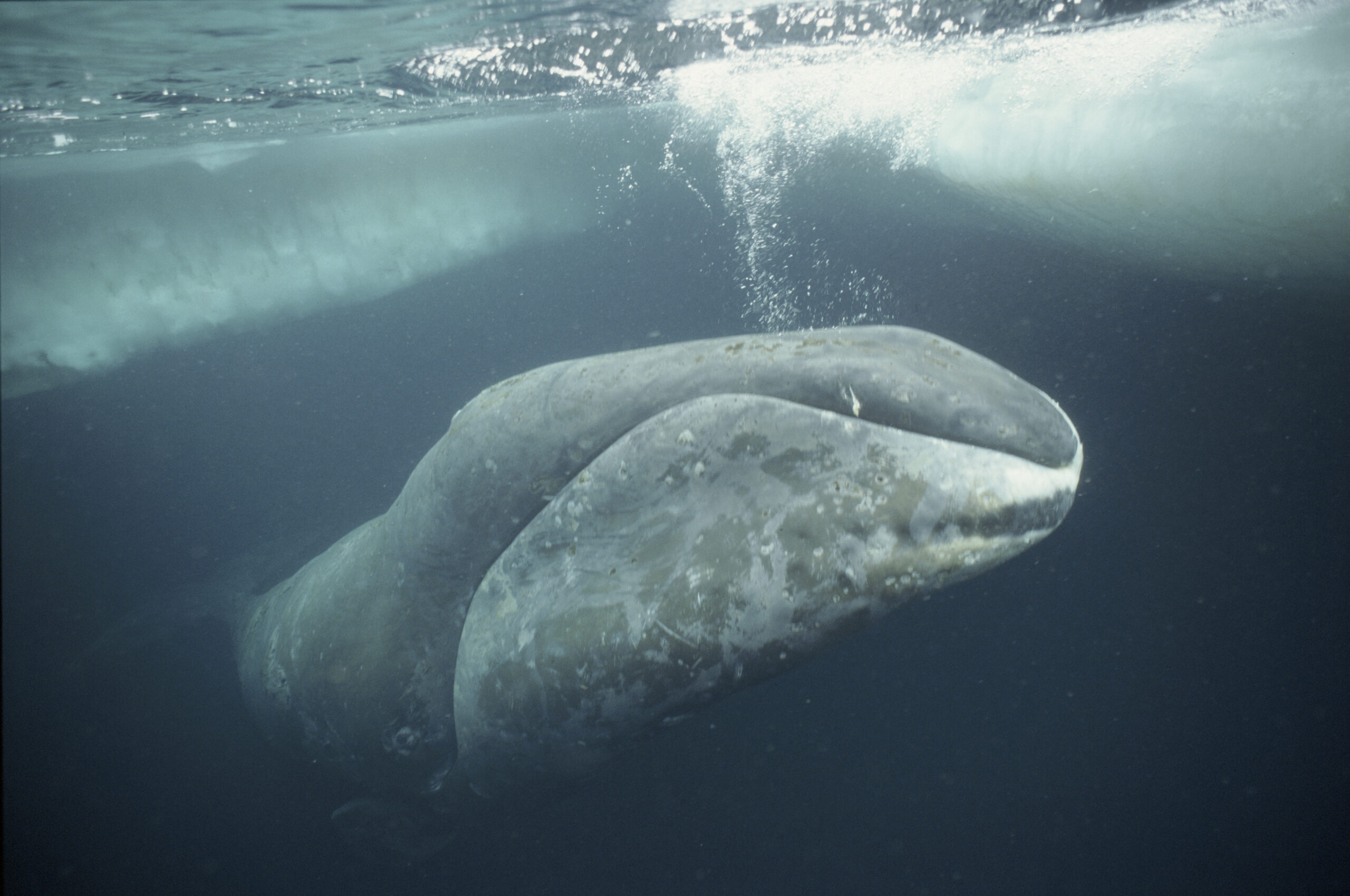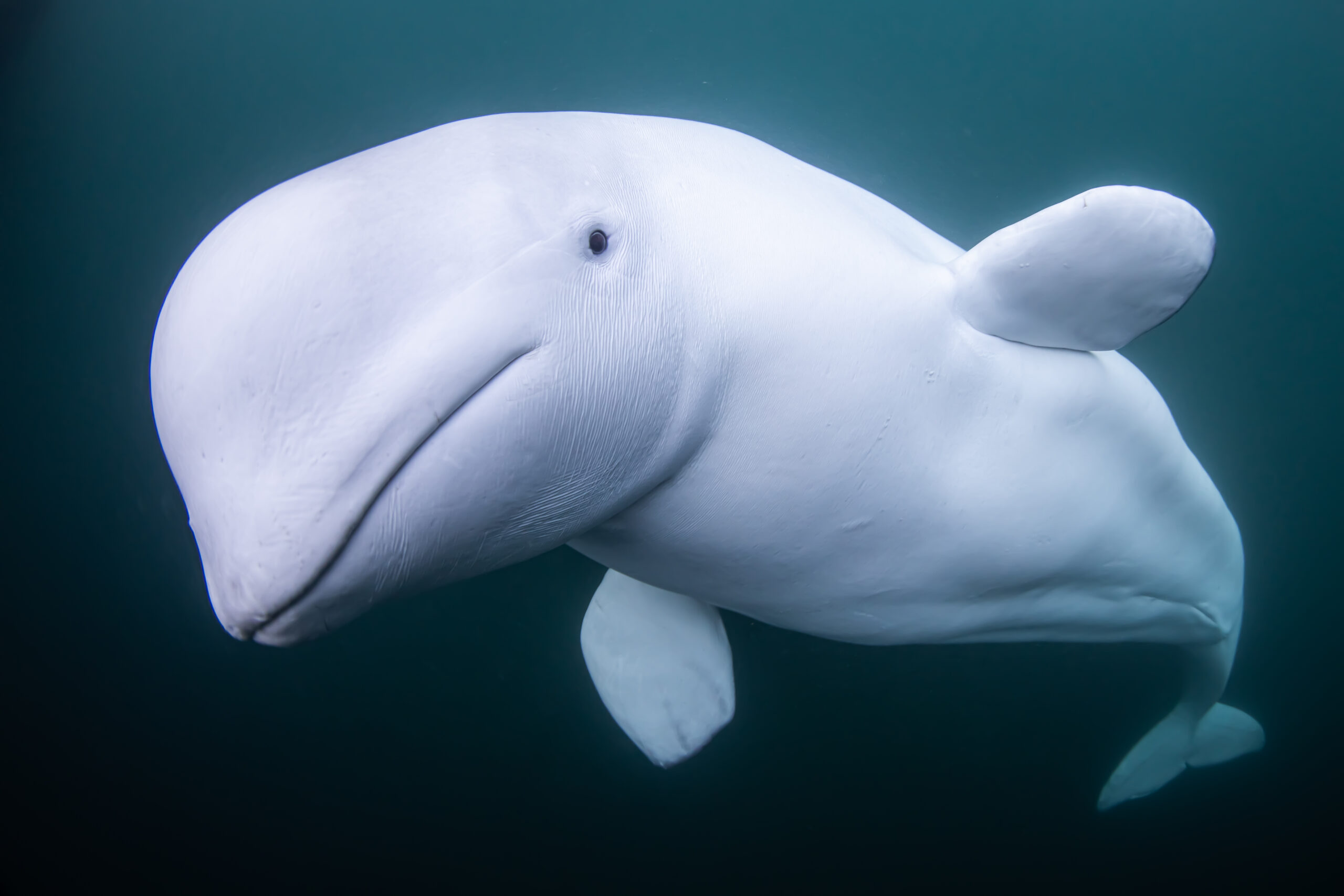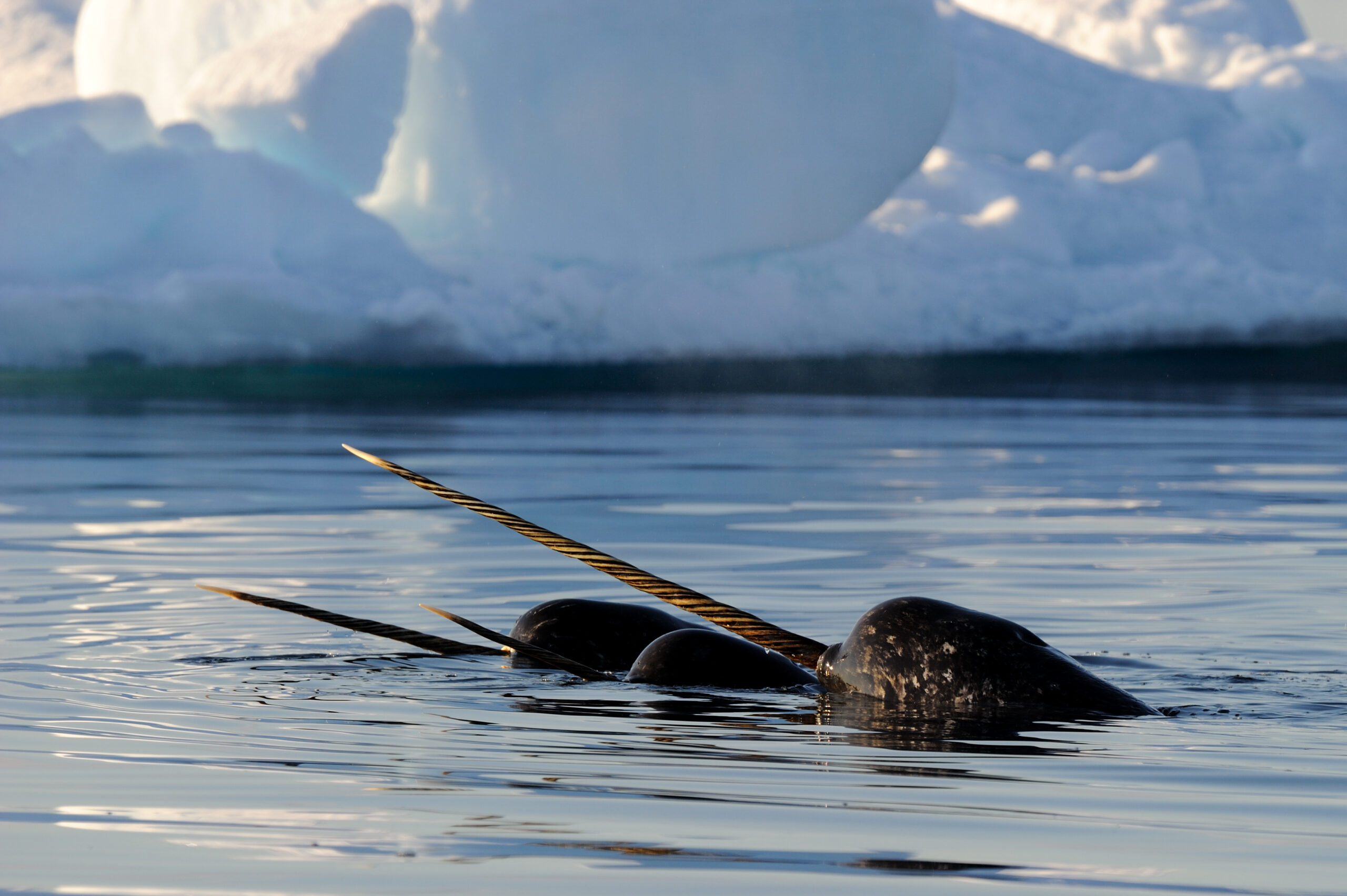Getting to know the Arctic’s whales
When Arctic sea ice breaks up in spring, whales that winter in more southern areas — such as humpbacks, minkes and fins — migrate north to spend their summers there.
Only three whale species call the Arctic home year-round: belugas, narwhal and bowheads. This Giving Tuesday, you can help ice whales and other remarkable Arctic species thrive by supporting vital wildlife research.

These whales have evolved to take advantage of sea ice and thrive in the Arctic’s frigid waters. But warming temperatures over the past decades have led to rapid sea ice declines and longer periods of open water in summer across much of the Arctic. These changes are bringing threats like oil and gas exploration and increased shipping.
Climate change is also altering the whales’ migratory patterns and the ecosystems they have depended on for thousands of years. By better understanding belugas, narwhal and bowheads — and how their behaviours are changing — we can work together to protect these Arctic species.
Bowhead whales: Giants of the Arctic

Bowhead whales, sometimes called Greenland whales, are found on both the Atlantic and Pacific sides of the Arctic. Their migrations are influenced by the melting and freezing of ice. These “giants of the Arctic” can reach more than 19 metres in length, and their large, reinforced skulls and powerful bodies enable them to break through sea ice up to 20 centimetres thick.
As with narwhal and beluga whales, bowhead whales don’t have dorsal fins. This is thought to help them minimize the heat loss that could come from a protruding fin. But perhaps more importantly, it helps the whales manoeuvre in waters covered by heavy sea ice.
Believed to be among the longest-lived mammals on Earth, bowhead whales can live for up to 200 years. They filter their food through baleen, special bristle-like structures in their mouths, opening their jaws and straining plankton from the surface, water column or close to the sea floor.
Heavily hunted by commercial whalers until the last century, bowhead whales across much of the Arctic are now recovering. Over the last 40 years, their conservation status has been gradually downlisted from “endangered.” They are currently listed as “least concern” on the International Union for Conservation of Nature (IUCN) Red List, although two populations have been extremely slow to recover.
But with climate change, bowhead whales now face new threats. Since they swim slowly, often near the water’s surface, they are at risk of being struck by ships. They also “sing” at a similar sound frequency to that of the underwater noise produced by ships, which could disrupt their ability to use sound to communicate.
Beluga whales: Canaries of the sea

Belugas, or white whales, live primarily in areas with sea ice. They are extremely sociable mammals that typically live, hunt and migrate in small pods of two to 10 whales, though they may form herds of up to 2,000 individuals in summering areas. Many populations migrate between summer and winter habitats. In summer, belugas are also found near river mouths and may even venture upriver in search of food. They feed on a variety of fish species, such as salmon, herring, shrimp, Arctic cod, flounder, crabs and molluscs.
Their name comes from the Russian word “bielo,” meaning white. But these whales are actually dark grey at birth and lighten in colour during their juvenile years. Female belugas are completely white by about age 14, while males can take another six years to achieve the trademark colour.
They have a bulbous forehead, called a “melon,” that is capable of changing shape and is believed to play an important role in belugas’ ability to send and interpret sound underwater. Often called the “canary of the sea,” belugas are highly vocal and produce a series of chirps, clicks, whistles and squeals to convey important information to each other.
Beluga whales typically live as long as 80 years. But as climate change reduces the amount of sea ice in the Arctic, sightings of orcas in beluga whale habitats have increased. Orcas are a major predator of all three Arctic whale species, including belugas. Belugas also face threats from underwater noise produced by shipping, oil and gas development, and heavy metal and organic pollutants.
Narwhal: Unicorns of the sea

Narwhal live in the Arctic waters of Canada, Greenland, Norway and Russia. During the winter months, most of the world’s narwhal congregate in the icy areas between eastern Canada and western Greenland in Baffin Bay and the Davis Strait. Narwhal, like bowheads and belugas, will surface to breathe in “leads”—or cracks in sea ice—as well as breathing holes. They feed mainly on Greenland halibut along with other fish, squid and shrimp.
Nicknamed the “unicorn of the sea,” the narwhal is well-known for its long ivory tusk. This spiralled tusk — which is actually an enlarged left tooth — can reach up to 2.5 metres in length and has millions of nerve endings, which are thought to help the narwhal locate food.
Of the three Arctic whales, scientists believe narwhals are the most sensitive to climate change because of their reliance on sea ice and specialized feeding. As the Arctic warms and sea ice disappears, narwhals face pressures similar to those of the other two Arctic species, such as changes to prey, predators and sea ice habitat as well as underwater noise pollution from increased industrial activities, especially shipping.
Narwhals are listed as a species of “least concern” on the IUCN Red List, but some Greenlandic populations have declined in recent years. In fact, in Southeast Greenland, scientific assessments put narwhals at high risk of local extinction.
This Giving Tuesday, you can help safeguard the future of Arctic species above and below the ice. And when you give before midnight on Dec. 3, 2024, your gift will be matched for double the impact!
This article originally appeared in WWF Arctic’s latest issue of The Circle, “Making Waves: Getting it right for Arctic whales.”


